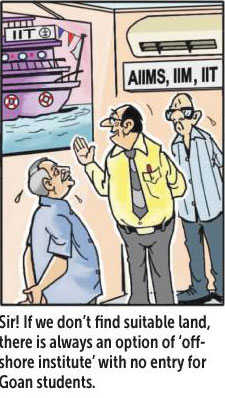The recent terrorist attack on an Indian Air Force vehicle convoy clearly shows that the Pakistani Army does not want peace, even though the Pakistani public and the industry captains desperately want normal ties with India to facilitate trade between the two countries.
Pakistan’s army chief General Syed Asim Munir recently raked up the “Kashmir issue” again. While recalling the 2019 India-Pakistan situation, he emphasized that his country will continue to provide “moral, political, diplomatic support” for Kashmir and Kashmiris.
This shows that Kashmir and anti-India rhetoric is the only source of oxygen for the Pakistani Army to survive, as its image of being the only reliable organisation for stability in Pakistan, has taken a severe beating following killings of its soldiers at the hands of insurgents like the Baloch Liberation Army (BLA), Tehreek-e-Labbaik, Tehereek-e-Taliban Pakistan (TTP) and scores of other insurgent groups operating inside Pakistan.
The problem with the Pakistani establishment is that it wants to remain oblivious to the fact that the internal strife by Pakistani insurgents is a bigger threat to its peace and integrity than India. There are currently 44 active insurgent groups operating inside Pakistan and 26 inactive terrorist groups.
Since 2000, Pakistan has witnessed 24,129 incidents of killing and 21,991 deaths. Sectarian strife remains a challenge to the Pakistani state and a danger to its citizenry. Evidence suggests sectarian animosity is spreading into larger parts of the Sunni Islamist milieu.
In previous decades, Deobandi Sunni groups, particularly Sipah-e-Sahaba Pakistan (SSP) and its offshoot Lashkar-e-Jhangvi, instigated much of the violence. But two distinct new forces, the Salafi Islamic State Khorasan Province (ISKP) – the local Islamic State branch – and Tehreek-e-Labaik Pakistan (Labaik, for short) – a hardline political party and violent protest movement whose followers come mostly from Pakistan’s Barelvi Sunni majority – have now taken the lead, reconfiguring the nature of the threat.
All relevant governmental organs need to act expeditiously lest the problem keep worsening. Of greatest importance are moves to deny sectarian hardliners space to promote their hatred and legal measures to show that these militants cannot attack – or spur others to attack – their fellow citizens with impunity.
Sunni militant groups spread their roots in Pakistan during General Zia-ul-Haq’s military government (1977-1988). The anti-Soviet jihad in Afghanistan, efforts to curb Shia militancy in response to Iran’s 1979 revolution, the regime’s Islamisation program – all these Zia-era policies prepared the ground for organisations with sectarian agendas to flourish.
The SSP and, later, its ostensibly separate armed wing, Lashkar-e-Jhangvi – both of which draw their support from among Deobandis, an orthodox and often hardline Sunni sub-sect – waged a violent campaign aimed at excluding Shias from public life, including clashes with militant Shia groups.
In the 1990s, the military-sponsored insurgency in Indian-administered Kashmir allowed these groups to consolidate their presence. Lashkar-e-Jhangvi continued to target Shias until the mid-2010s, when police action decimated its leadership and sectarian attacks declined.
But a period of relative peace has yielded to a new era of sectarian conflict, one with different – and in some ways more pernicious – characteristics. Many former Lashkar-e-Jhangvi foot soldiers have turned to the Islamic State’s local franchise. ISKP’s original core in Afghanistan comprised many former Pakistani Taliban militants.
ISKP competes for influence and recruits with the Pakistani Taliban, especially in Khyber Pakhtunkhwa and Balochistan provinces, which share long borders with Afghanistan. It has claimed sectarian attacks in both. It was responsible for the 4 March 2022 bombing of a Shia mosque in Peshawar, which claimed more than 60 lives.
The Salafi group is also reportedly making inroads in parts of the erstwhile Federally Administered Tribal Areas (merged into Khyber Pakhtunkhwa in 2018).
Perhaps even more worrying is that sectarian militancy now runs across the range of Sunni Islamist groups, including adherents to what was once regarded as the more moderate Barelvi sub-sect, believed to constitute a thin majority of Pakistan’s population. Labaik, a movement operating openly in Pakistani society and drawing support mostly from the Barelvi, poses a very different threat to ISKP’s network of underground cells.
The State’s failure to prosecute those responsible for sectarian attacks is feeding into a permissive legal environment. What is needed is a proactive rather than reactive approach. It will require major investment in intelligence gathering in order to build strong evidence against those preaching, inciting and conducting acts of sectarian violence.
It would be prudent for the Pakistani establishment to focus on its own internal strife to protect its people from mercenaries, ironically prodded by them, rather than unnecessarily provoking India.
India does not bother about Pakistan anymore, unless provoked, as is evident from the long ceasefire maintained by Indian troops along with LOC and International Border. Pakistan’s real enemy lies within. But it refuses to acknowledge it at its own peril.
Anti-India rhetoric is a smokescreen that has been created before the eyes of Pakistanis, so that they don’t question the Army, which doesn’t have the guts to take India head-on. The Pakistani establishment needs to come out of its delusions about threat from India and smell the coffee.
